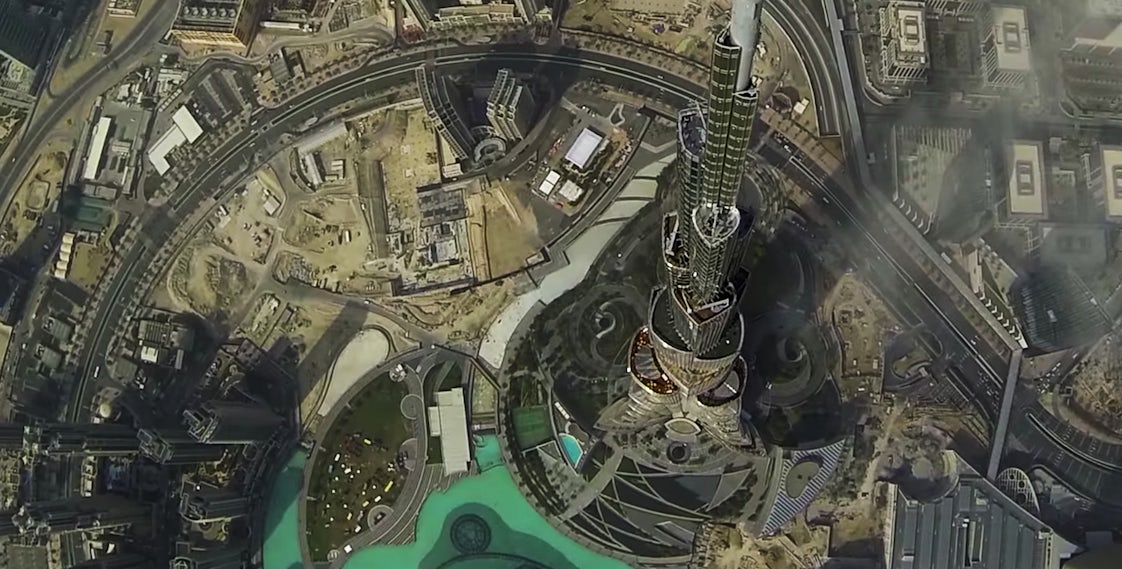Architizer's A+Product Awards is open for submissions, with the Extended Entry Deadline fast approaching on Friday, February 23rd. Get your products in front of the AEC industry’s most renowned designers by submitting today.
Ludwig Mies van der Rohe’s Barcelona Pavilion was constructed in 1929 for the Barcelona International Exposition. The stunning modern masterpiece was an ambitious, and expensive, project made of steel, marble and travertine — yet it was deconstructed the following year (the influential structure was faithfully rebuilt in the 1980s). Although the Barcelona Pavilion is one of a kind, it is not unlike many other architectural projects that are built for display and then promptly demolished.
The practice of constructing temporary pavilions began long before Mies and continues to this day, despite our better understanding of the relationship between careless architecture and environmental destruction. Every year, architects create temporary projects for expositions, conventions and biennales — pavilions that often serve little purpose other than to illustrate new architectural ideas.
While temporary architecture can respond to environmental concerns, as it creates less of a footprint than permanent structures, many pavilions are intensive projects using significant amounts of energy and materials despite their short lifespans. In order to create minimal environmental impact, architects must also design efficient modes of production. The following projects are all pavilions built to exhibit new architectural ideas. They not only represent environmentally conscious approaches to pavilion-building — they make these alternative construction processes the very idea that they are designed to illustrate.
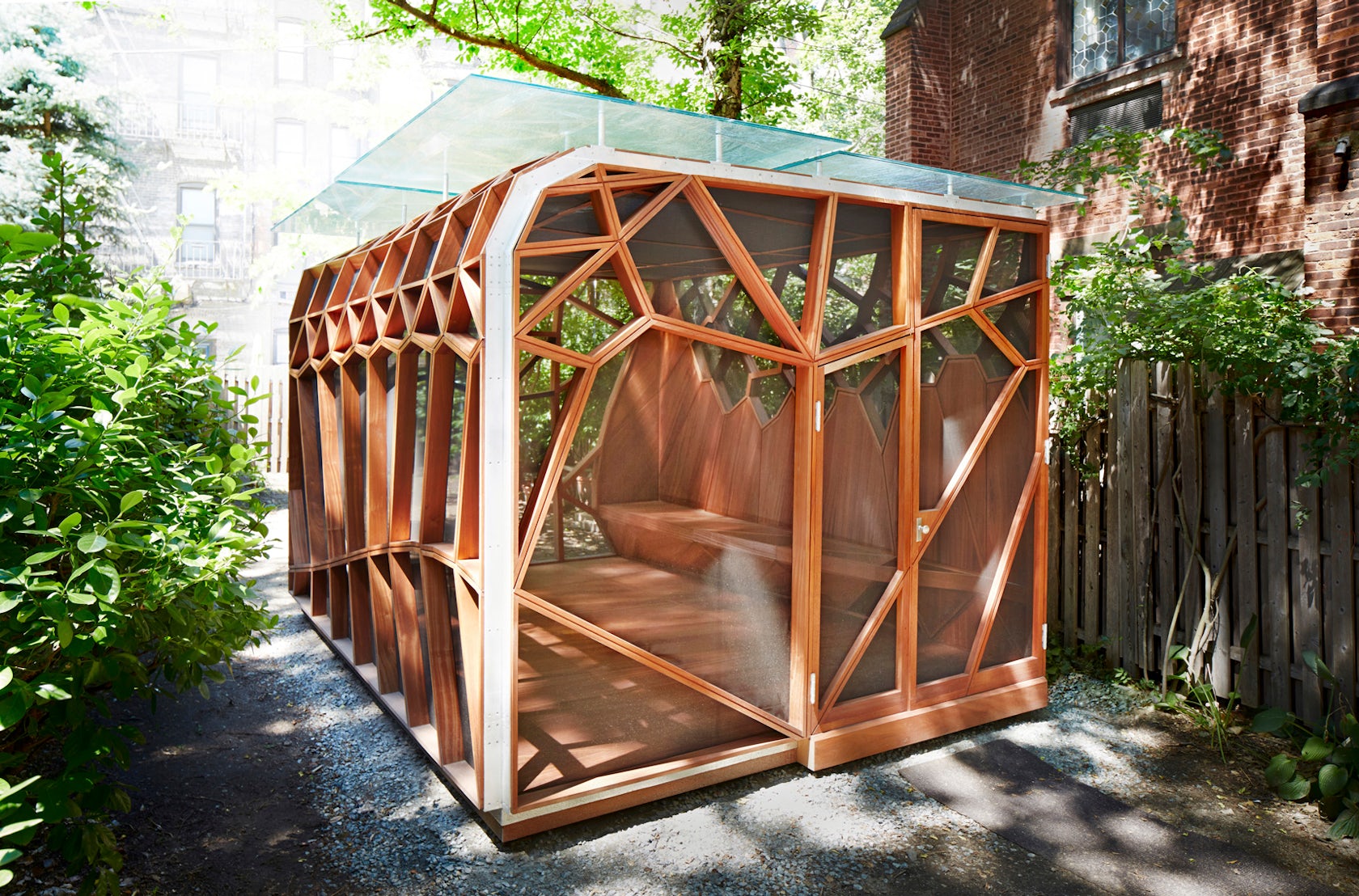
© John Muggenborg Architectural Photography
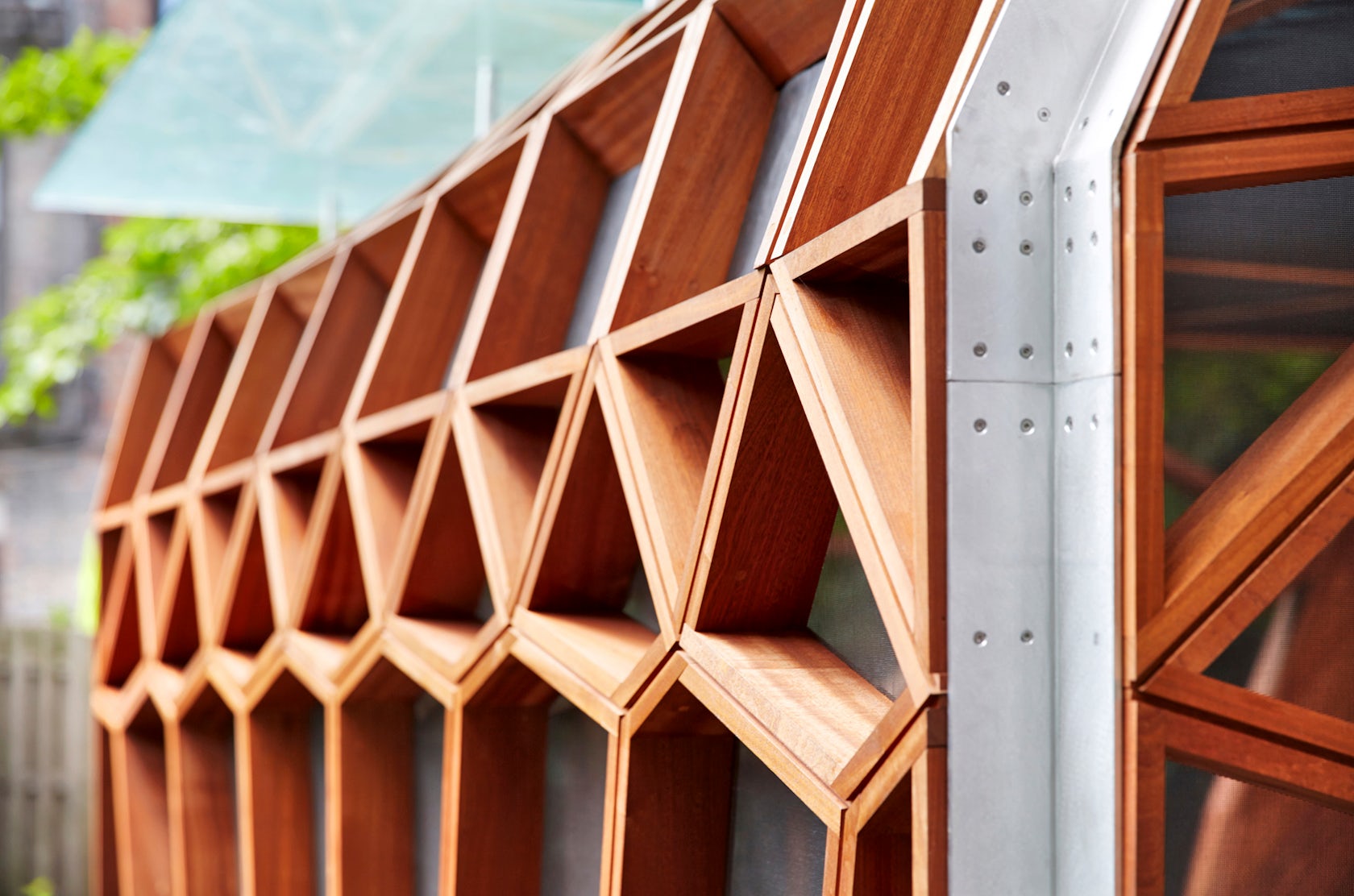
© John Muggenborg Architectural Photography
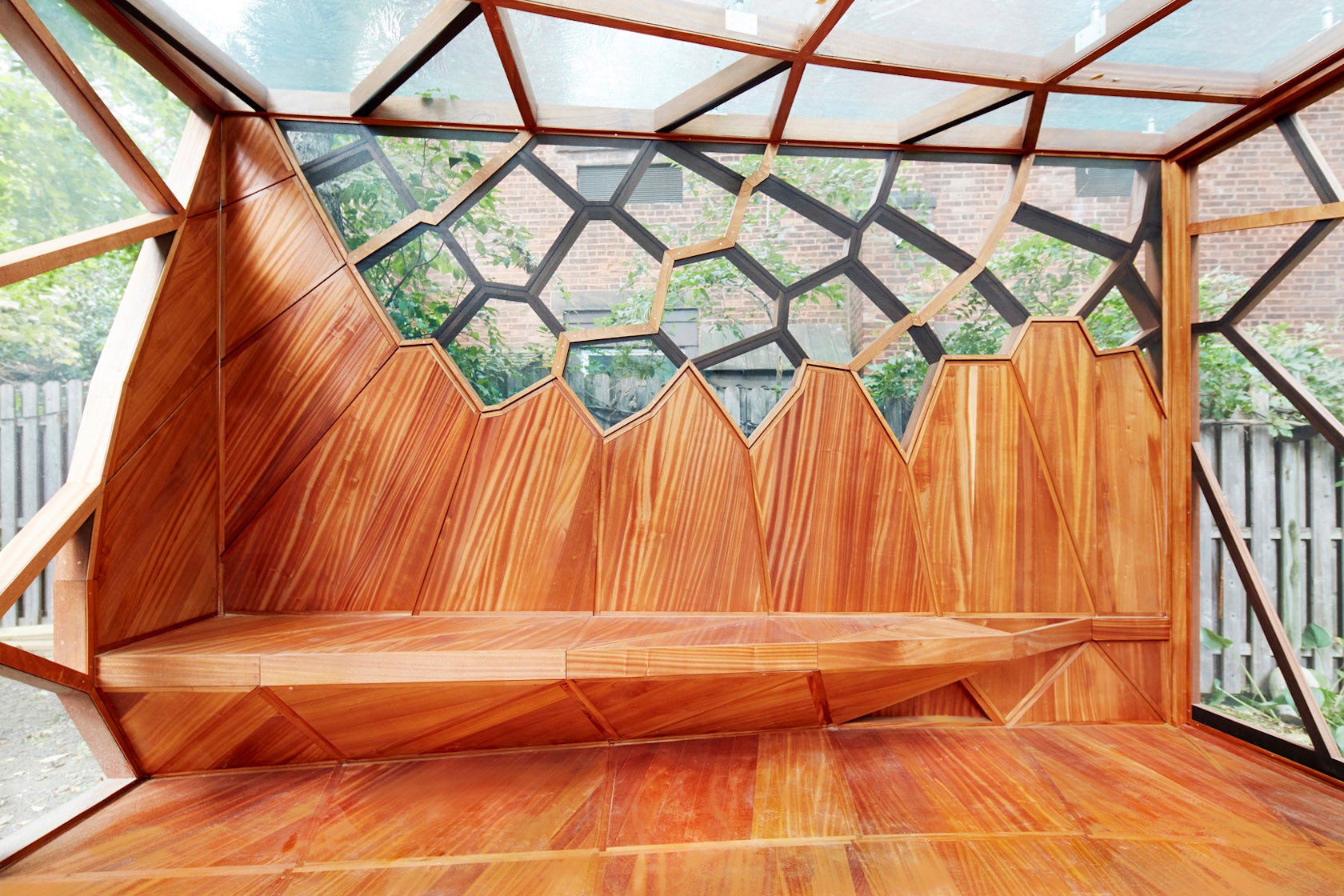
© John Muggenborg Architectural Photography
Dragonfly Pavilion, CDR Studio Architects, Hoboken, N.J.
The Dragonfly Pavilion demonstrates that recycled architecture does not have to mean compromising beauty, sophistication or complexity. Built out of sustainably sourced wood with a recycled aluminum frame, this postmodern shelter was designed with digital tools that helped reduce the materials required for construction. The architects looked to insect anatomy for inspiration when designing the pavilion’s uniquely shaped windows.

© Farnaz Fattahi

© Farnaz Fattahi

© Farnaz Fattahi
PIPE Pavilion, Farnaz Fattahi, Mashhad, Iran
Khayyam University’s PIPE Pavilion Project transformed concerns for sustainability and the environment into an architectural metaphor for cycles of consumption and waste. The students used cardboard tubes designated as waste to construct a large, organically shaped arch. The project proudly displays its modest materials, leaving the cardboard uncovered and unpainted. Yet the unremarkable building blocks combine to create something that is almost unrecognizable and completely extraordinary. The sculptural form was conceived as a symbol of the landscape that provides the materials for the cardboard tubes and which is made to suffer as a result of our wasteful modes of production.

© STUDIOKCA

© STUDIOKCA
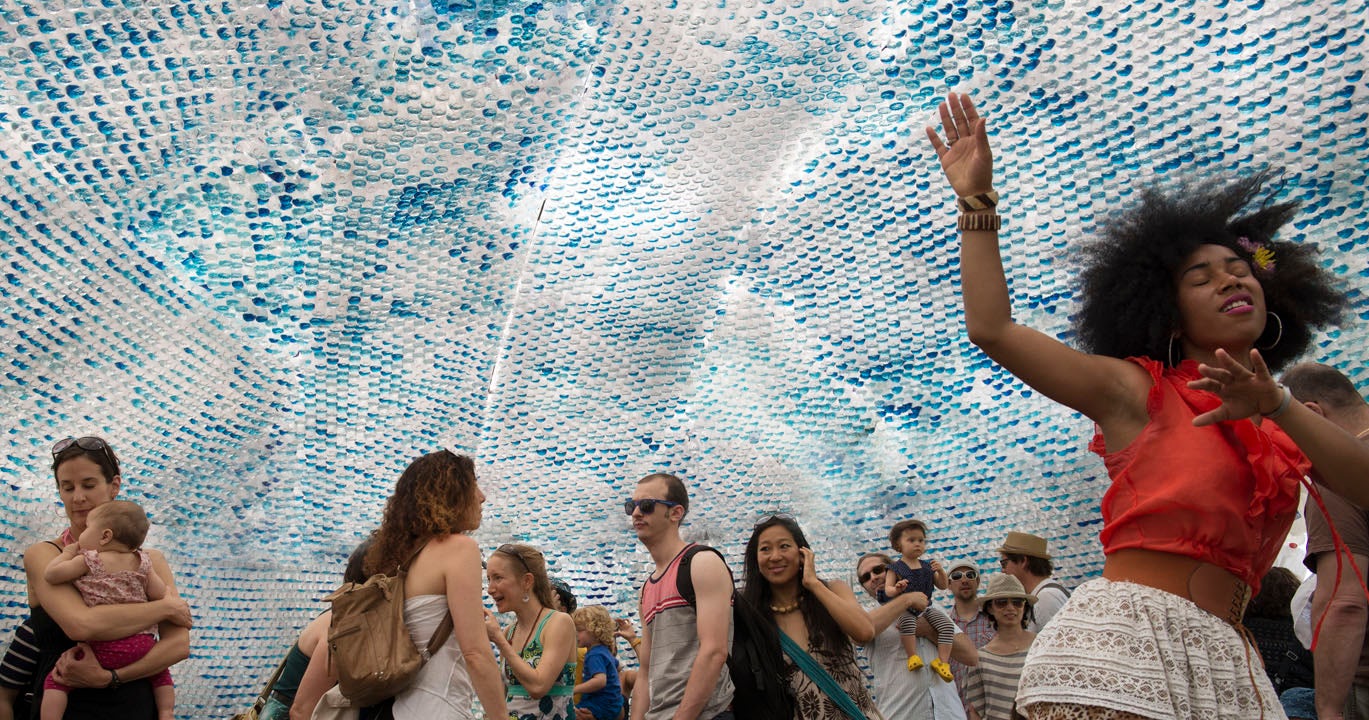
© STUDIOKCA
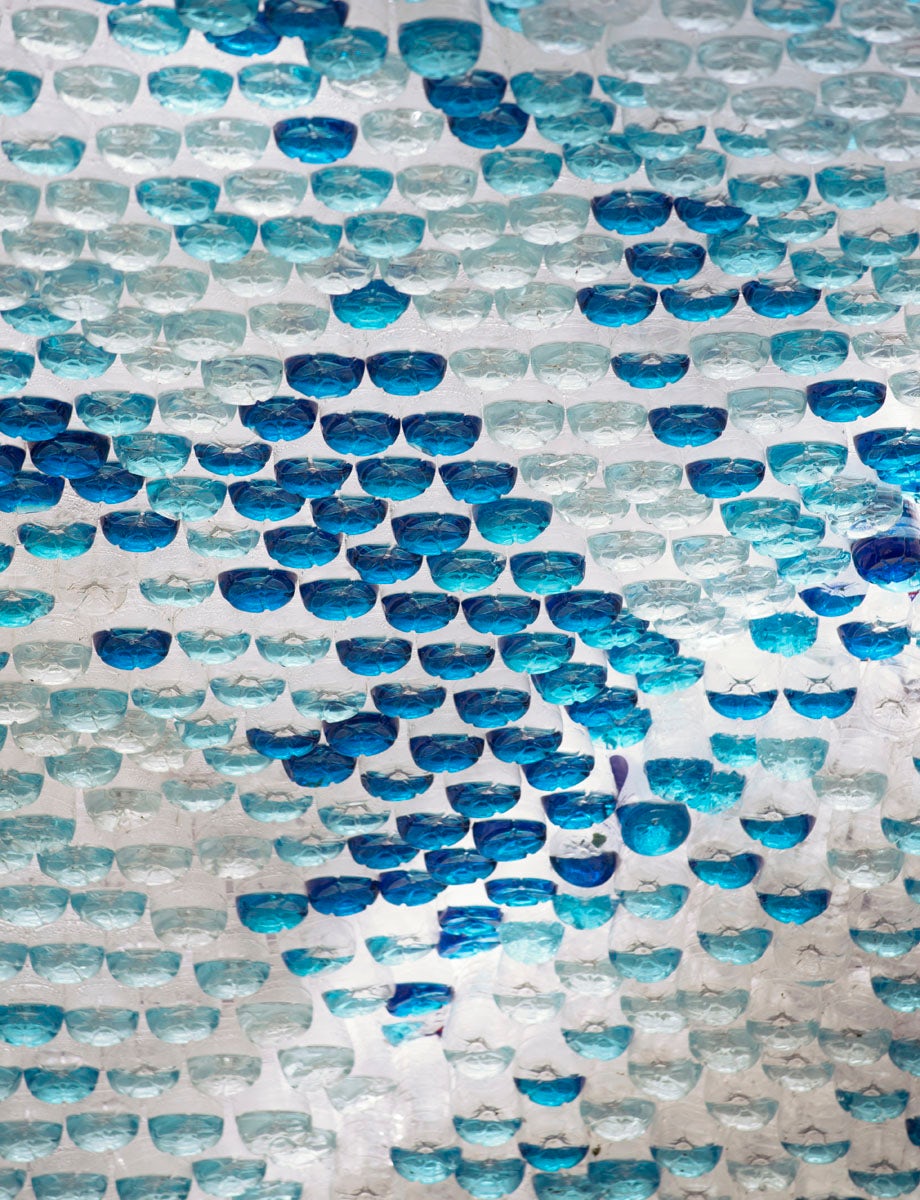
© STUDIOKCA
Head in the Clouds Pavilion, STUDIOKCA, New York, N.Y.
As with the PIPE Pavilion, the Head in the Clouds Pavilion was built as a visual metaphor for cycles of consumption. Winner of the 2013 City of Dreams Pavilion contest in New York City, this project was composed of the number of bottles thrown away in New York every hour. The pavilion transformed this abundant waste into a space for contemplation and imagination. Designed to look like a cloud, the structure not only references the natural processes that are disrupted by waste and pollution or the water-carrying capacity of the bottles that are thrown away — it also suggests the possibilities for modes of production that are sustainable and regenerative.

© CDR Studio Architects, PC

© CDR Studio Architects, PC

© CDR Studio Architects, PC
Governor’s Cup Pavilion, CDR Studio Architects, PC, New York, N.Y.
The winner of the 2014 City of Dreams Pavilion contest took a similar approach to the Head in the Clouds Pavilion. The project was constructed out of thousands of recycled plastic cups, which were drilled together to form a transparent, organic structure resembling the trees around it. The Pavilion not only utilized the local community’s waste — it rallied the community to fund, build and enjoy the structure.
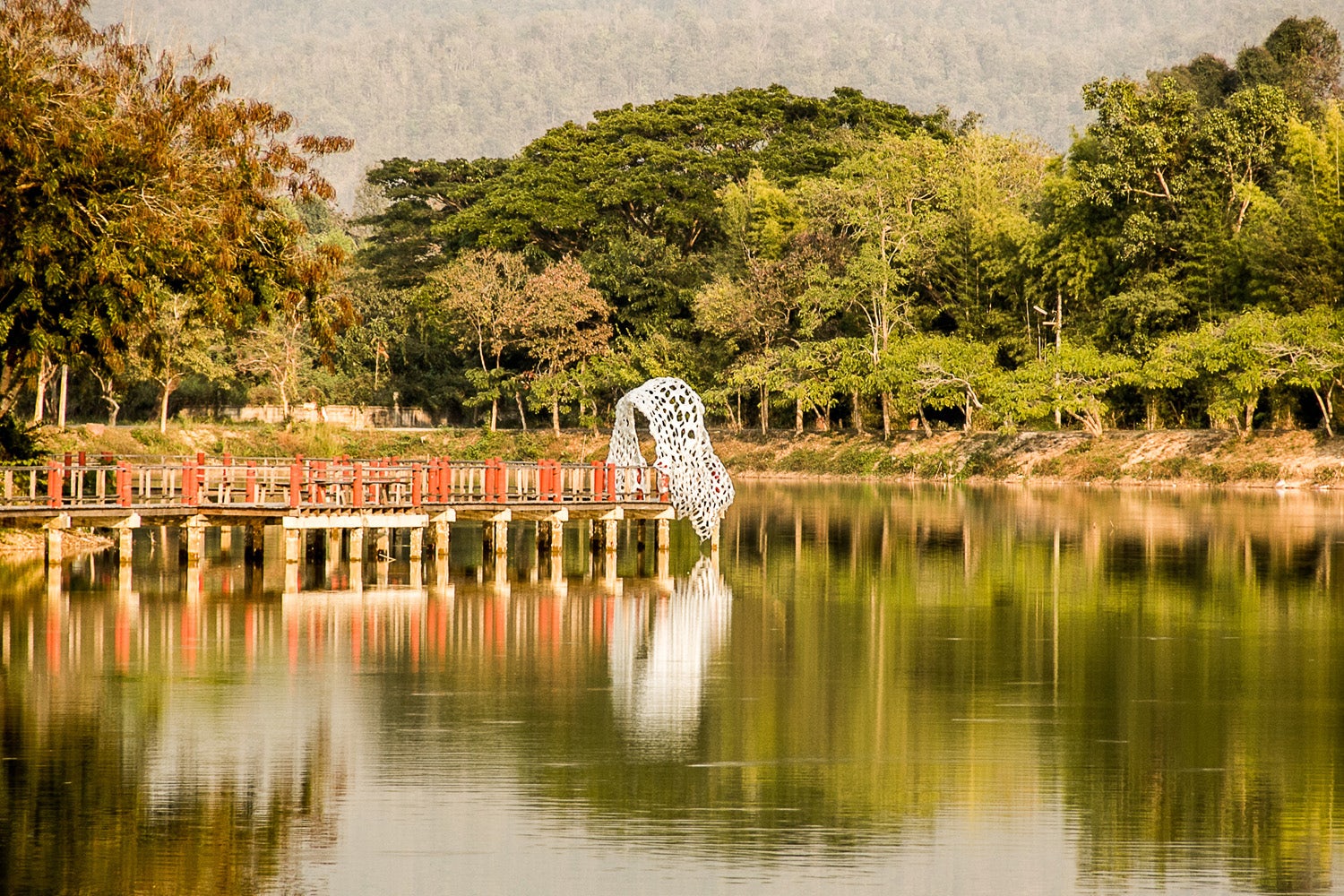
© VINN PATARARIN X FAHPAV

© VINN PATARARIN X FAHPAV

© VINN PATARARIN X FAHPAV
Self-Ornamentalize, VIN PATARARIN X FAHPAV, Doi Saket District, Thailand
Rather than representing a landscape or forces of nature, Self-Ornamentalize evokes — in an abstracted form — the waste that it is made from. Determined to create a pavilion using local materials, the architects behind the project decided that one of the most abundant local materials was the plastic in bottles that are used and quickly disposed of by consumers. Hanging precariously over the edge of a wooden dock, Self-Ornamentalize could be another piece of plastic debris about to litter the lake just below. Yet instead the pavilion suggests a different, more beautiful afterlife for consumer by-products.
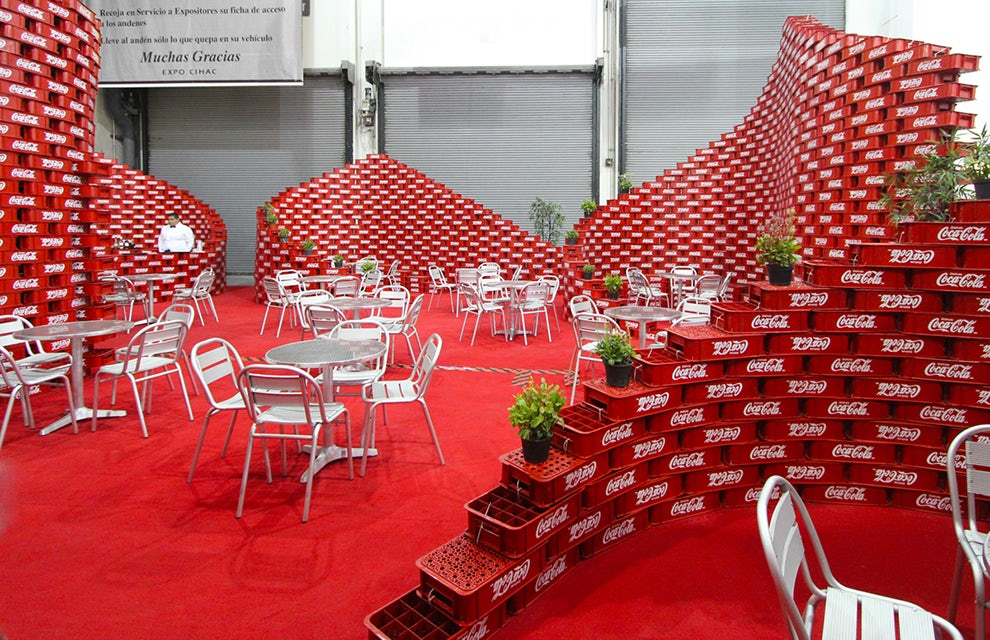
© Bunker Arquitectura
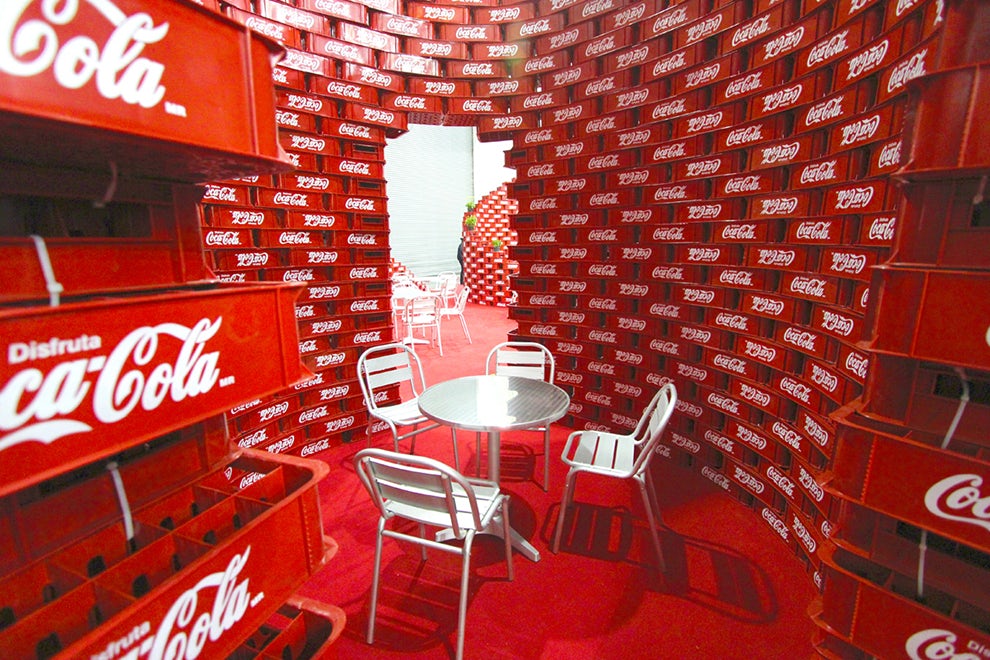
© Bunker Arquitectura

© Bunker Arquitectura
Upcycling Pavilion, Bunker Arquitectura, Mexico City, Mexico
Built for the 2012 Expo CIHAC, the Upcycling Pavilion was designed to draw attention to the excessive and wasteful practices that have become routine at large architectural conventions. Bunker Arquitectura gained attention by transforming the convention’s cafeteria into an experiment of recyclable architecture. They built large, curvilinear walls out of borrowed soda crates, which were easily obtained and fit together like LEGOs. The repetitive Coca-Cola logos made the pavilion into something of a Pop Art installation, but the project clearly demonstrated that a powerful statement could be made by spending less and wasting less.
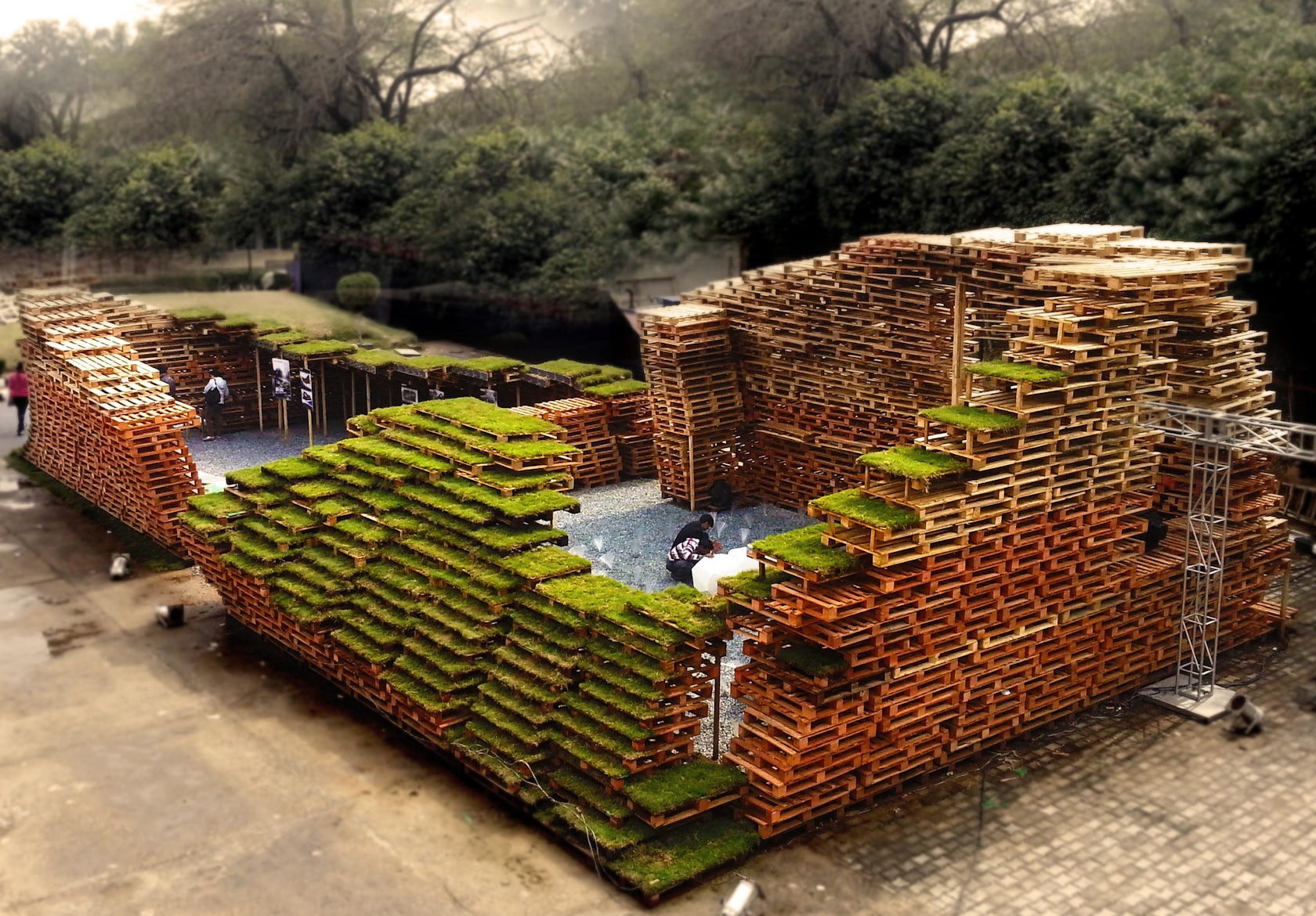
© MOFA Studios Pvt. Ltd.
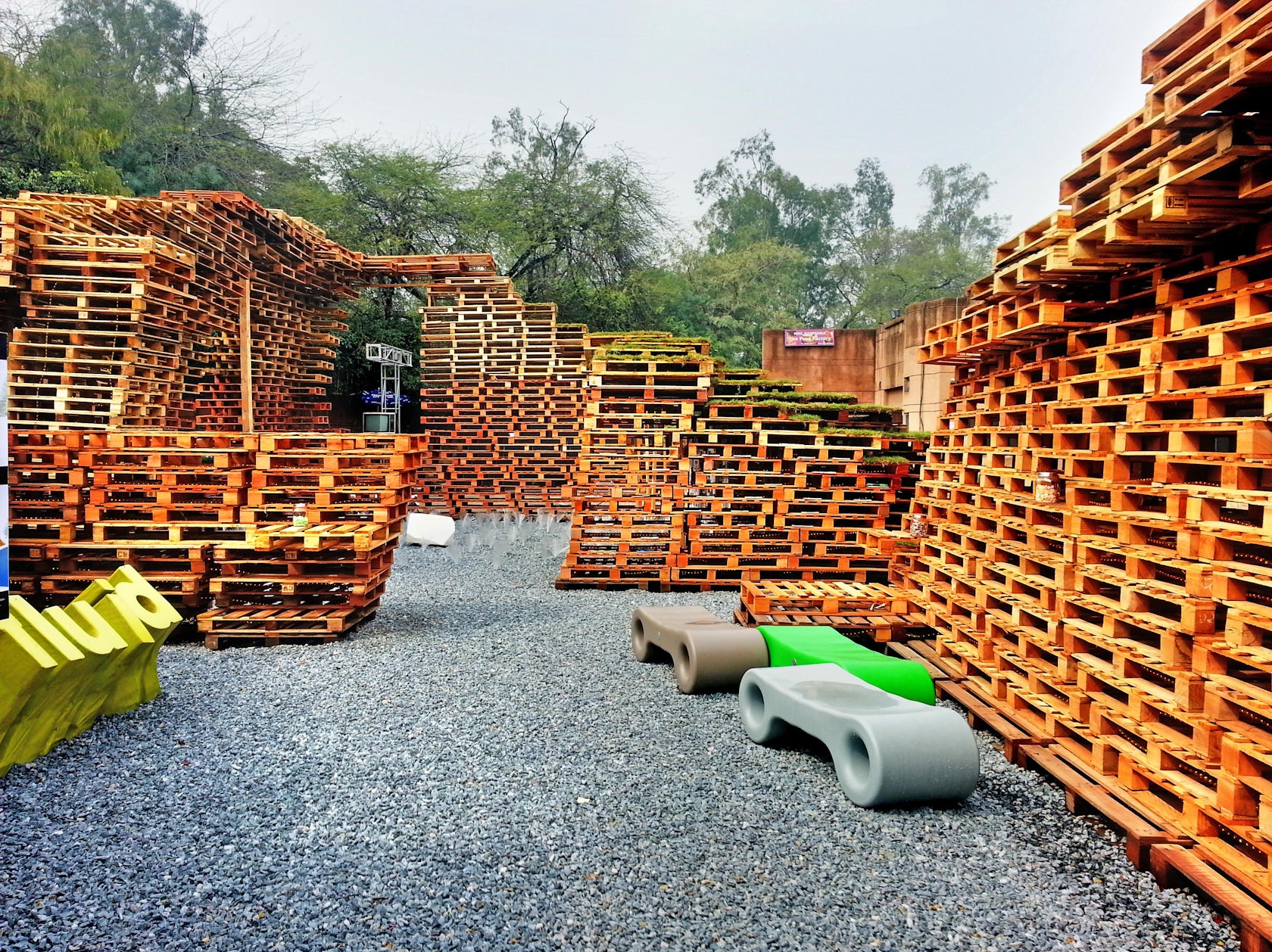
© MOFA Studios Pvt. Ltd.
Pensieve, MOFA Studios, Pvt. Ltd., New Delhi, India
As with the Upcycling Pavilion, Pensieve grew from an attempt to find new uses for industrial by-products, but instead of soda crates, MOFA Studios chose wooden pallets that had been deemed useless. The studio stacked the pallets to create a structure that, in turn, resembled a form of architectural waste: the ruins that have developed around the city of Delhi. As with their building materials, the architects did not find disuse to be a source of discouragement. As children, they treated these ruins as a playground and a place of unbridled imagination. The architects hoped their pavilion would provide the same form of inspiration. In keeping with their concerns for sustainability, the studio built the pavilion as a temporary structure. Yet ironically, the project was so successful that the local community tried to make the pavilion permanent.
Architizer's A+Product Awards is open for submissions, with the Extended Entry Deadline fast approaching on Friday, February 23rd. Get your products in front of the AEC industry’s most renowned designers by submitting today.







